A boosted HP filter for business cycle analysis: evidence from New Zealand's small open economy.
We investigate whether the boosted HP filter (bHP) proposed by Phillips and Shi (2021) might be preferred for New Zealand trend and growth cycle analysis, relative to using the standard HP filter (HP1600). We do this for a representative range of quarterly macroeconomic time series typically used in small theoretical and empirical macroeconomic models, and address the following questions. Tradition dictates that business cycle periodicities lie between 6 and 32 quarters (e.g. Baxter and King, 1999) (BK). In the context of more recent business cycle durations, should periodicities up to 40 quarters or more now be considered? Phillips and Shi (2021) propose two stopping rules for selecting a bHP trend. Does it matter which is applied? We propose other trend selection criteria based on the cut-off frequency and sharpness of the trend filter. Are stylised business cycle facts from bHP filtering materially different to those produced from HP1600? In particular, does bHP filtering lead to New Zealand growth cycles which are noticeably different from those associated with HP1600 or BK filtering? HP1600 is commonly used as an omnibus filter across all key macroeconomic variables. Does the greater flexibility of bHP filtering provide better alternatives? We conclude that the 6 to 32 quarter business cycle periodicity is sufficient to reflect New Zealand growth cycles and determine stylised business cycle facts and, for our representative 13-variable macroeconomic data set, using a bHP filter (2HP1600) as an omnibus filter is preferable to using the HP1600 filter.
Updated: 18 July 2024/Responsible Officer: Crawford Engagement/Page Contact: CAMA admin










